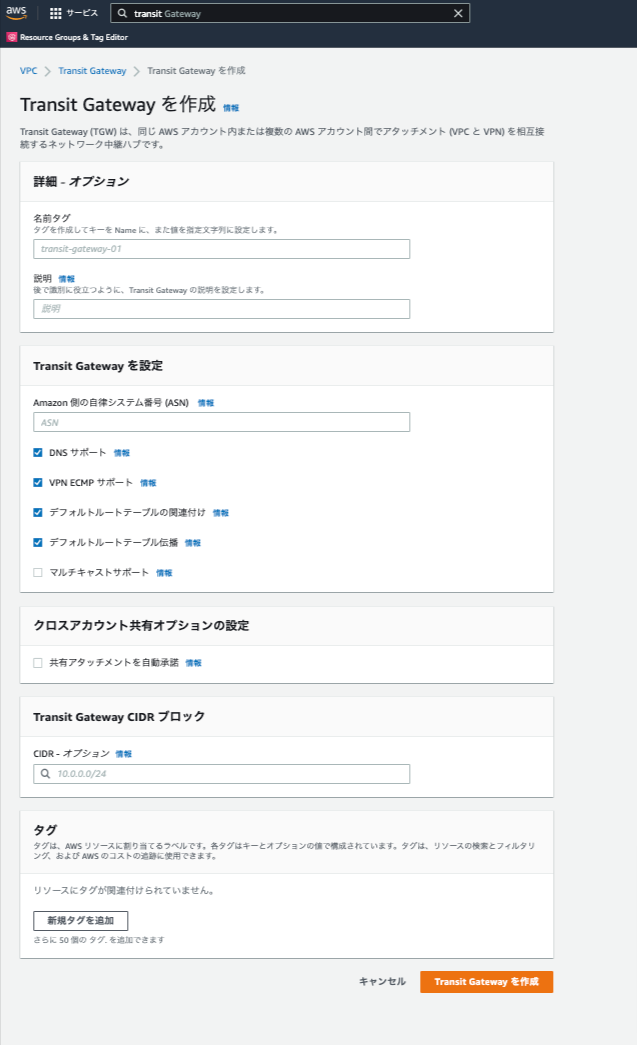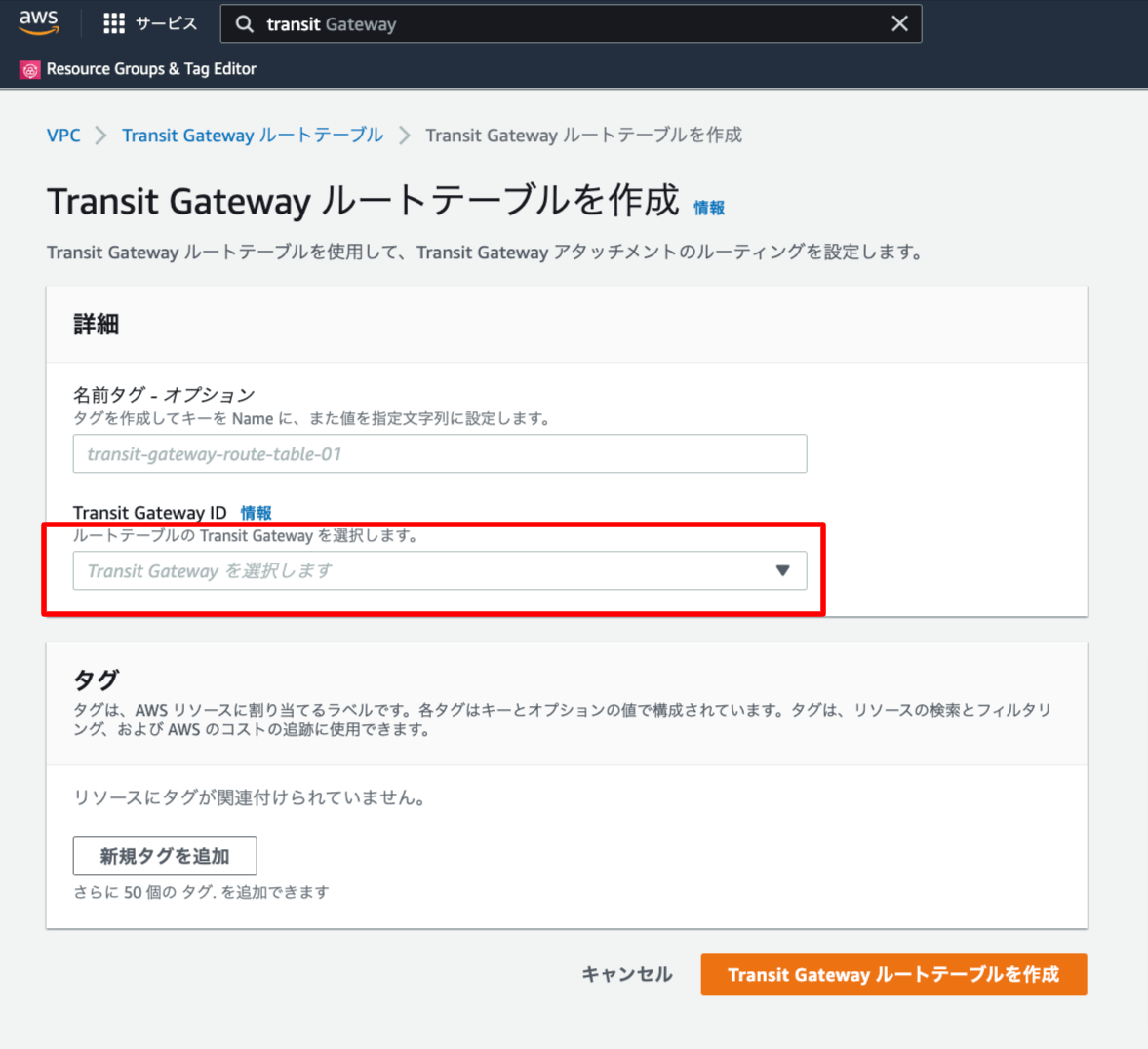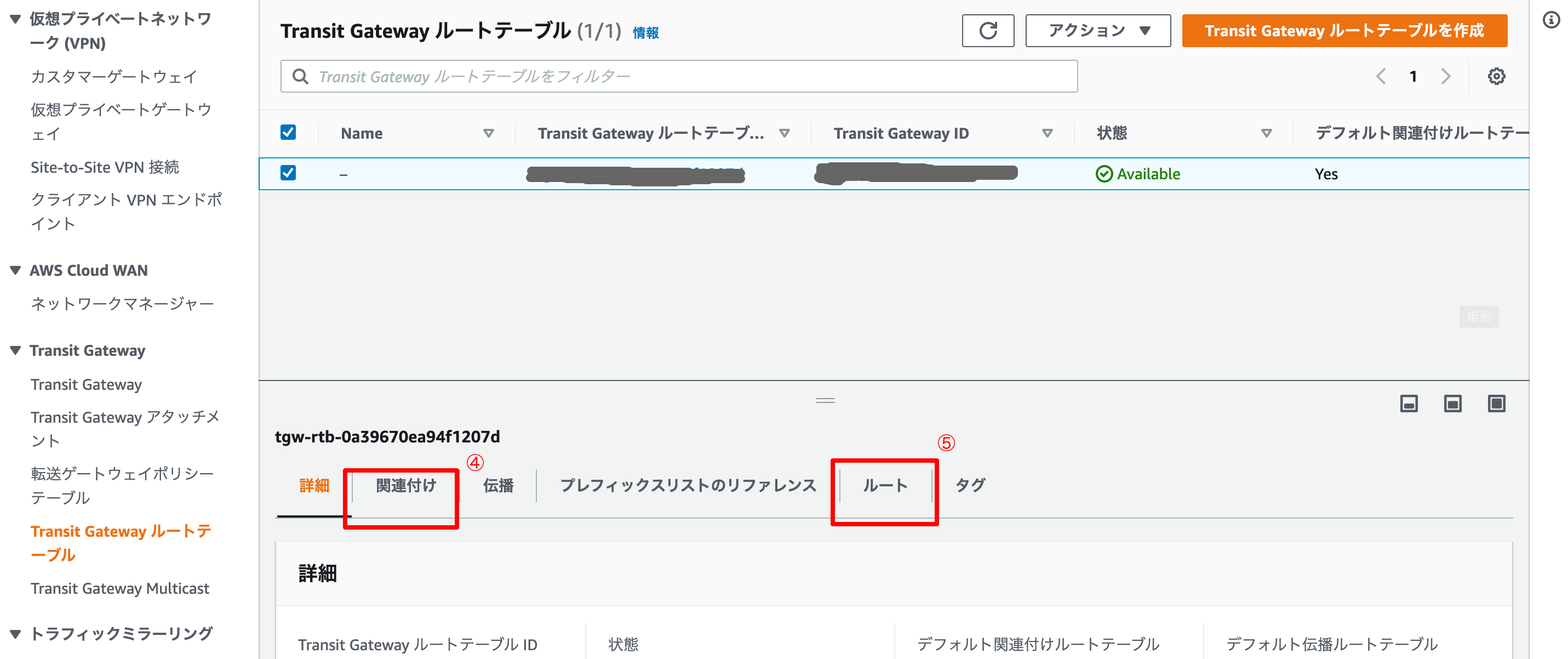1. Introduction
Hello! We are a writer team from Definer Inc.
As organizations grow in size and complexity, their cloud infrastructure expands, leading to the presence of multiple Virtual Private Clouds (VPCs) to isolate different workloads and enhance security. In such scenarios, managing inter-VPC communication can become challenging and cumbersome. To address this challenge, AWS offers a solution called Transit Gateway, which simplifies the process of connecting multiple VPCs and on-premises networks in a scalable and centralized manner.
In this issue, you are wondering how to connect 3 or more VPCs with Transit Gateway.
Let's take a look at the actual screens and resources to explain in detail.
2. Purpose/Use Cases
The purpose of "Connecting 3 or more VPCs with Transit Gateway" is to demonstrate how organizations can use AWS Transit Gateway to establish seamless and efficient communication between multiple VPCs. With Transit Gateway, network administrators can centralize the routing and management of VPC traffic, leading to improved visibility, simplified network architecture, and reduced operational overhead.
Key Concepts and Benefits of "Connecting 3 or more VPCs with Transit Gateway":
(1) Transit Gateway
(2) Simplified Network Architecture
(3) Scalability and Performance
(4) Network Isolation and Segmentation
(5) Centralized Management and Monitoring
(6) Hybrid Network Connectivity
In this article, we will utilize the AWS Transit Gateway technology for the purpose of connecting multiple networks.
It provides a collection of information and practices that can be helpful when you want to connect three or more networks using Transit Gateway in an IT setting.
3. What is Transit Gateway?
First, a quick review of the Transit Gateway.
AWS Transit Gateway is a cloud router that connects networks that act as hubs.
Compared to VPC Peering, which provides 1:1 network connectivity, Transit Gateway can connect multiple VPCs, allowing for a more loosely coupled network configuration.
It also allows for more complex routing, as routing can be configured on a per-attachment basis.
One caveat is that there is a bandwidth limit of 50 Gbps, so it is necessary to confirm that the requirements are met before deployment.
4. Connecting 3 VPCs with Transit Gateway
We will immediately connect the three VPCs with Transit Gateway.
The assumption is that the three VPCs and RouteTable already exist.
Also, it is assumed that the CIDR blocks of each VPC do not overlap.
(1) Create a Transit Gateway:
- A Transit Gateway acts as a hub that facilitates the connection of multiple VPCs and VPN connections. It simplifies the network architecture by allowing a hub-and-spoke model, where each VPC connects to the Transit Gateway, eliminating the need for direct VPC-to-VPC peering.
- Access the AWS Management Console and navigate to the VPC service. Click on the "Transit Gateway" tab and then click "Create Transit Gateway."
- Provide a descriptive name for the Transit Gateway to identify it easily. The Transit Gateway will be the central point of communication for all connected VPCs.
- Create the Transit Gateway using the default settings for other configurations, such as ASN (Autonomous System Number) and Amazon Route 53 Resolver DNS (Domain Name System) support.
 (2) Create Transit Gateway Attachments:
A Transit Gateway Attachment is used to connect each VPC to the Transit Gateway. It establishes a secure and efficient connection between the VPC and the Transit Gateway, allowing communication between resources within the VPC and resources in other connected VPCs.
Access the "Transit Gateway Attachment" tab in the VPC console and click "Create Transit Gateway Attachment."
Select the Transit Gateway you created earlier, and then choose the respective VPC and subnet to be connected to the Transit Gateway.
As you need one Transit Gateway Attachment per VPC (three in this case), follow the same procedure to create attachments for all the VPCs you want to connect.
(2) Create Transit Gateway Attachments:
A Transit Gateway Attachment is used to connect each VPC to the Transit Gateway. It establishes a secure and efficient connection between the VPC and the Transit Gateway, allowing communication between resources within the VPC and resources in other connected VPCs.
Access the "Transit Gateway Attachment" tab in the VPC console and click "Create Transit Gateway Attachment."
Select the Transit Gateway you created earlier, and then choose the respective VPC and subnet to be connected to the Transit Gateway.
As you need one Transit Gateway Attachment per VPC (three in this case), follow the same procedure to create attachments for all the VPCs you want to connect.
 (3) Creating a Transit Gateway RouteTable:
A Transit Gateway RouteTable is responsible for configuring the routing settings within the Transit Gateway. It defines how traffic is routed between the connected VPCs.
Access the "Transit Gateway Route Table" tab in the VPC console and click "Create Transit Gateway Route Table."
Specify the Transit Gateway you created earlier. Note that you need one Transit Gateway RouteTable per VPC (three in this case) that you want to connect through the Transit Gateway.
The Transit Gateway RouteTable provides an overview of the routes and the next-hop destinations for the attached VPCs.
(3) Creating a Transit Gateway RouteTable:
A Transit Gateway RouteTable is responsible for configuring the routing settings within the Transit Gateway. It defines how traffic is routed between the connected VPCs.
Access the "Transit Gateway Route Table" tab in the VPC console and click "Create Transit Gateway Route Table."
Specify the Transit Gateway you created earlier. Note that you need one Transit Gateway RouteTable per VPC (three in this case) that you want to connect through the Transit Gateway.
The Transit Gateway RouteTable provides an overview of the routes and the next-hop destinations for the attached VPCs.
 (4) Attach the Transit Gateway RouteTable:
After creating the Transit Gateway RouteTable, associate it with the corresponding Transit Gateway Attachment for each VPC.
In the VPC console, select the Transit Gateway Attachment and navigate to the "Associations" section under the "Transit Gateway RouteTable" tab.
Click on "Create Associations" and associate the appropriate Transit Gateway RouteTable with each Transit Gateway Attachment.
This step ensures that traffic can be directed correctly between the VPCs through the Transit Gateway.
(5)Add Routing for Transit Gateway RouteTable:
Once the Transit Gateway RouteTable is associated with the Transit Gateway Attachment, configure the routing settings to enable proper traffic flow between the connected VPCs.
In the VPC console, select the Transit Gateway RouteTable, click on the "Route" tab, and add a static route to allow traffic to be routed between the connected VPCs through the Transit Gateway.
This static route specifies the destination CIDR block and the next-hop attachment (i.e., the Transit Gateway Attachment of the target VPC).
(4) Attach the Transit Gateway RouteTable:
After creating the Transit Gateway RouteTable, associate it with the corresponding Transit Gateway Attachment for each VPC.
In the VPC console, select the Transit Gateway Attachment and navigate to the "Associations" section under the "Transit Gateway RouteTable" tab.
Click on "Create Associations" and associate the appropriate Transit Gateway RouteTable with each Transit Gateway Attachment.
This step ensures that traffic can be directed correctly between the VPCs through the Transit Gateway.
(5)Add Routing for Transit Gateway RouteTable:
Once the Transit Gateway RouteTable is associated with the Transit Gateway Attachment, configure the routing settings to enable proper traffic flow between the connected VPCs.
In the VPC console, select the Transit Gateway RouteTable, click on the "Route" tab, and add a static route to allow traffic to be routed between the connected VPCs through the Transit Gateway.
This static route specifies the destination CIDR block and the next-hop attachment (i.e., the Transit Gateway Attachment of the target VPC).
 (6) Configure the RouteTable Attached to Each VPC:
Each VPC has its own local RouteTable, which handles routing decisions within the VPC.
In the VPC console, go to the "RouteTable" tab, select the RouteTable associated with each VPC, and add the appropriate routes for local traffic within each VPC.
Local traffic remains within the VPC and doesn't need to go through the Transit Gateway.
After completing these steps, the three VPCs are network-wise connected through the Transit Gateway. The Transit Gateway acts as a central hub, enabling seamless and efficient communication between the VPCs. All traffic destined for other VPCs is efficiently routed through the Transit Gateway, simplifying the network architecture and reducing administrative overhead.
A quick ping across the VPC confirms that it's reachable!
(6) Configure the RouteTable Attached to Each VPC:
Each VPC has its own local RouteTable, which handles routing decisions within the VPC.
In the VPC console, go to the "RouteTable" tab, select the RouteTable associated with each VPC, and add the appropriate routes for local traffic within each VPC.
Local traffic remains within the VPC and doesn't need to go through the Transit Gateway.
After completing these steps, the three VPCs are network-wise connected through the Transit Gateway. The Transit Gateway acts as a central hub, enabling seamless and efficient communication between the VPCs. All traffic destined for other VPCs is efficiently routed through the Transit Gateway, simplifying the network architecture and reducing administrative overhead.
A quick ping across the VPC confirms that it's reachable!
 (2) Create Transit Gateway Attachments:
A Transit Gateway Attachment is used to connect each VPC to the Transit Gateway. It establishes a secure and efficient connection between the VPC and the Transit Gateway, allowing communication between resources within the VPC and resources in other connected VPCs.
Access the "Transit Gateway Attachment" tab in the VPC console and click "Create Transit Gateway Attachment."
Select the Transit Gateway you created earlier, and then choose the respective VPC and subnet to be connected to the Transit Gateway.
As you need one Transit Gateway Attachment per VPC (three in this case), follow the same procedure to create attachments for all the VPCs you want to connect.
(2) Create Transit Gateway Attachments:
A Transit Gateway Attachment is used to connect each VPC to the Transit Gateway. It establishes a secure and efficient connection between the VPC and the Transit Gateway, allowing communication between resources within the VPC and resources in other connected VPCs.
Access the "Transit Gateway Attachment" tab in the VPC console and click "Create Transit Gateway Attachment."
Select the Transit Gateway you created earlier, and then choose the respective VPC and subnet to be connected to the Transit Gateway.
As you need one Transit Gateway Attachment per VPC (three in this case), follow the same procedure to create attachments for all the VPCs you want to connect.
 (3) Creating a Transit Gateway RouteTable:
A Transit Gateway RouteTable is responsible for configuring the routing settings within the Transit Gateway. It defines how traffic is routed between the connected VPCs.
Access the "Transit Gateway Route Table" tab in the VPC console and click "Create Transit Gateway Route Table."
Specify the Transit Gateway you created earlier. Note that you need one Transit Gateway RouteTable per VPC (three in this case) that you want to connect through the Transit Gateway.
The Transit Gateway RouteTable provides an overview of the routes and the next-hop destinations for the attached VPCs.
(3) Creating a Transit Gateway RouteTable:
A Transit Gateway RouteTable is responsible for configuring the routing settings within the Transit Gateway. It defines how traffic is routed between the connected VPCs.
Access the "Transit Gateway Route Table" tab in the VPC console and click "Create Transit Gateway Route Table."
Specify the Transit Gateway you created earlier. Note that you need one Transit Gateway RouteTable per VPC (three in this case) that you want to connect through the Transit Gateway.
The Transit Gateway RouteTable provides an overview of the routes and the next-hop destinations for the attached VPCs.
 (4) Attach the Transit Gateway RouteTable:
After creating the Transit Gateway RouteTable, associate it with the corresponding Transit Gateway Attachment for each VPC.
In the VPC console, select the Transit Gateway Attachment and navigate to the "Associations" section under the "Transit Gateway RouteTable" tab.
Click on "Create Associations" and associate the appropriate Transit Gateway RouteTable with each Transit Gateway Attachment.
This step ensures that traffic can be directed correctly between the VPCs through the Transit Gateway.
(5)Add Routing for Transit Gateway RouteTable:
Once the Transit Gateway RouteTable is associated with the Transit Gateway Attachment, configure the routing settings to enable proper traffic flow between the connected VPCs.
In the VPC console, select the Transit Gateway RouteTable, click on the "Route" tab, and add a static route to allow traffic to be routed between the connected VPCs through the Transit Gateway.
This static route specifies the destination CIDR block and the next-hop attachment (i.e., the Transit Gateway Attachment of the target VPC).
(4) Attach the Transit Gateway RouteTable:
After creating the Transit Gateway RouteTable, associate it with the corresponding Transit Gateway Attachment for each VPC.
In the VPC console, select the Transit Gateway Attachment and navigate to the "Associations" section under the "Transit Gateway RouteTable" tab.
Click on "Create Associations" and associate the appropriate Transit Gateway RouteTable with each Transit Gateway Attachment.
This step ensures that traffic can be directed correctly between the VPCs through the Transit Gateway.
(5)Add Routing for Transit Gateway RouteTable:
Once the Transit Gateway RouteTable is associated with the Transit Gateway Attachment, configure the routing settings to enable proper traffic flow between the connected VPCs.
In the VPC console, select the Transit Gateway RouteTable, click on the "Route" tab, and add a static route to allow traffic to be routed between the connected VPCs through the Transit Gateway.
This static route specifies the destination CIDR block and the next-hop attachment (i.e., the Transit Gateway Attachment of the target VPC).
 (6) Configure the RouteTable Attached to Each VPC:
Each VPC has its own local RouteTable, which handles routing decisions within the VPC.
In the VPC console, go to the "RouteTable" tab, select the RouteTable associated with each VPC, and add the appropriate routes for local traffic within each VPC.
Local traffic remains within the VPC and doesn't need to go through the Transit Gateway.
After completing these steps, the three VPCs are network-wise connected through the Transit Gateway. The Transit Gateway acts as a central hub, enabling seamless and efficient communication between the VPCs. All traffic destined for other VPCs is efficiently routed through the Transit Gateway, simplifying the network architecture and reducing administrative overhead.
A quick ping across the VPC confirms that it's reachable!
(6) Configure the RouteTable Attached to Each VPC:
Each VPC has its own local RouteTable, which handles routing decisions within the VPC.
In the VPC console, go to the "RouteTable" tab, select the RouteTable associated with each VPC, and add the appropriate routes for local traffic within each VPC.
Local traffic remains within the VPC and doesn't need to go through the Transit Gateway.
After completing these steps, the three VPCs are network-wise connected through the Transit Gateway. The Transit Gateway acts as a central hub, enabling seamless and efficient communication between the VPCs. All traffic destined for other VPCs is efficiently routed through the Transit Gateway, simplifying the network architecture and reducing administrative overhead.
A quick ping across the VPC confirms that it's reachable! 5. Cited/Referenced Articles
Connecting Multiple VPCs from a Transit Gateway VPN Connection
Amazon VPC - AWS Transit Gateway
Transit Gateway - Amazon VPC
Connecting multiple VPCs from a Transit Gateway VPN connection
Frequently Asked Questions - AWS Direct Connect | AWS
Explore AWS Transit Gateway use cases | DevelopersIO
Connecting multiple VPCs from a Transit Gateway VPN connection
6. About the proprietary solution "PrismScaler"
・PrismScaler is a web service that enables the construction of multi-cloud infrastructures such as AWS, Azure, and GCP in just three steps, without requiring development and operation.
・PrismScaler is a web service that enables multi-cloud infrastructure construction such as AWS, Azure, GCP, etc. in just 3 steps without development and operation.
・The solution is designed for a wide range of usage scenarios such as cloud infrastructure construction/cloud migration, cloud maintenance and operation, and cost optimization, and can easily realize more than several hundred high-quality general-purpose cloud infrastructures by appropriately combining IaaS and PaaS.
7. Contact us
This article provides useful introductory information free of charge. For consultation and inquiries, please contact "Definer Inc".
8. Regarding Definer
・Definer Inc. provides one-stop solutions from upstream to downstream of IT.
・We are committed to providing integrated support for advanced IT technologies such as AI and cloud IT infrastructure, from consulting to requirement definition/design development/implementation, and maintenance and operation.
・We are committed to providing integrated support for advanced IT technologies such as AI and cloud IT infrastructure, from consulting to requirement definition, design development, implementation, maintenance, and operation.
・PrismScaler is a high-quality, rapid, "auto-configuration," "auto-monitoring," "problem detection," and "configuration visualization" for multi-cloud/IT infrastructure such as AWS, Azure, and GCP.

